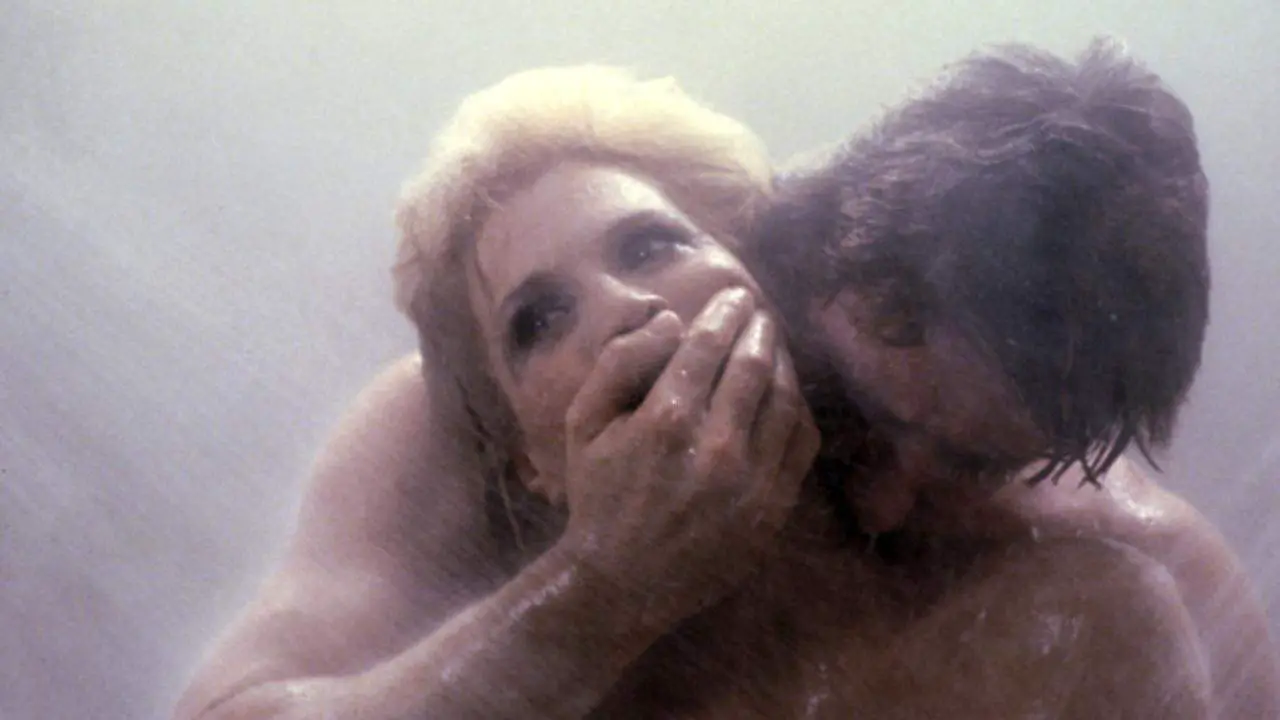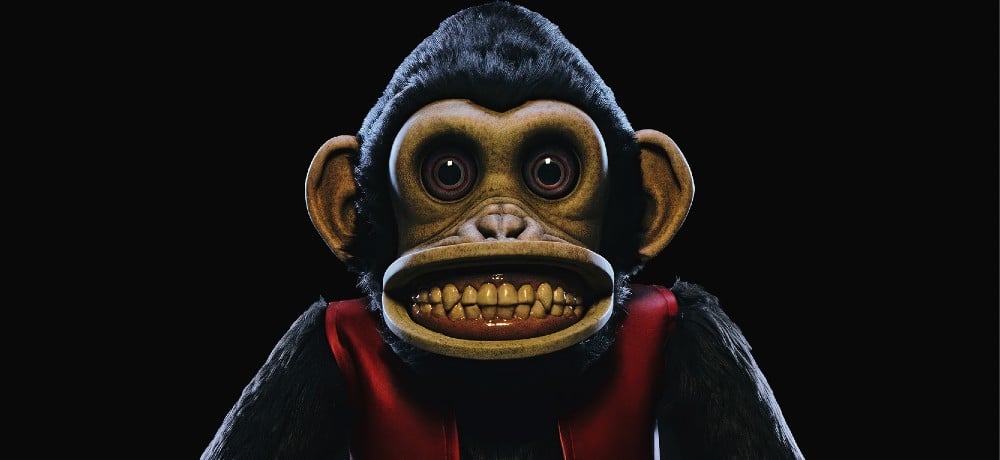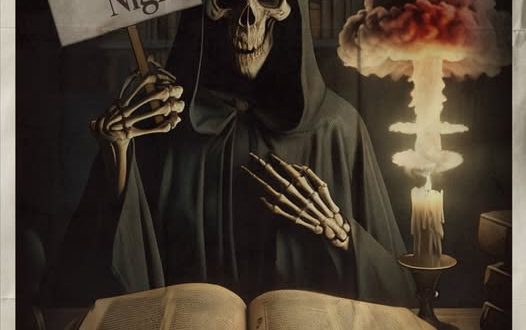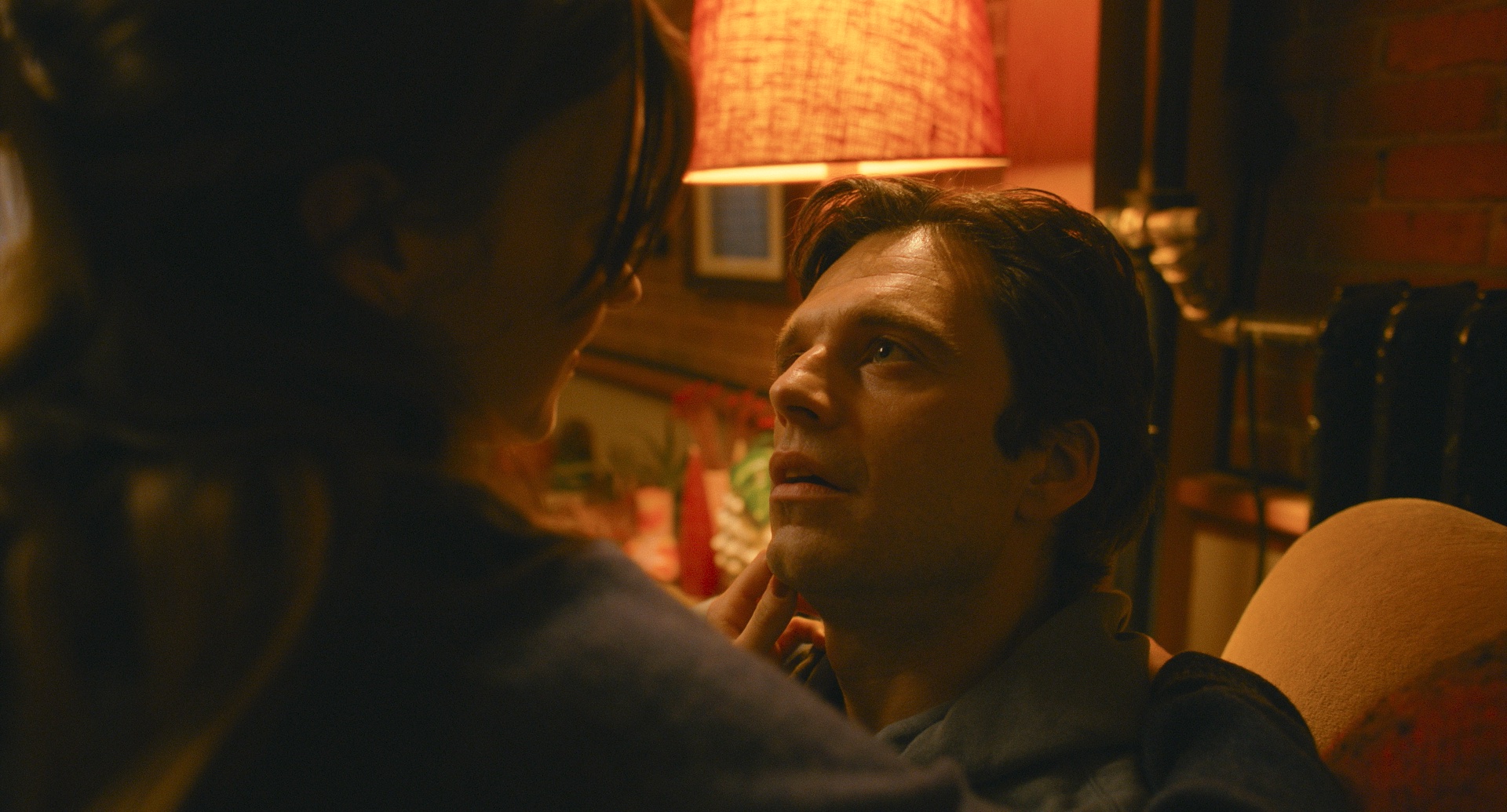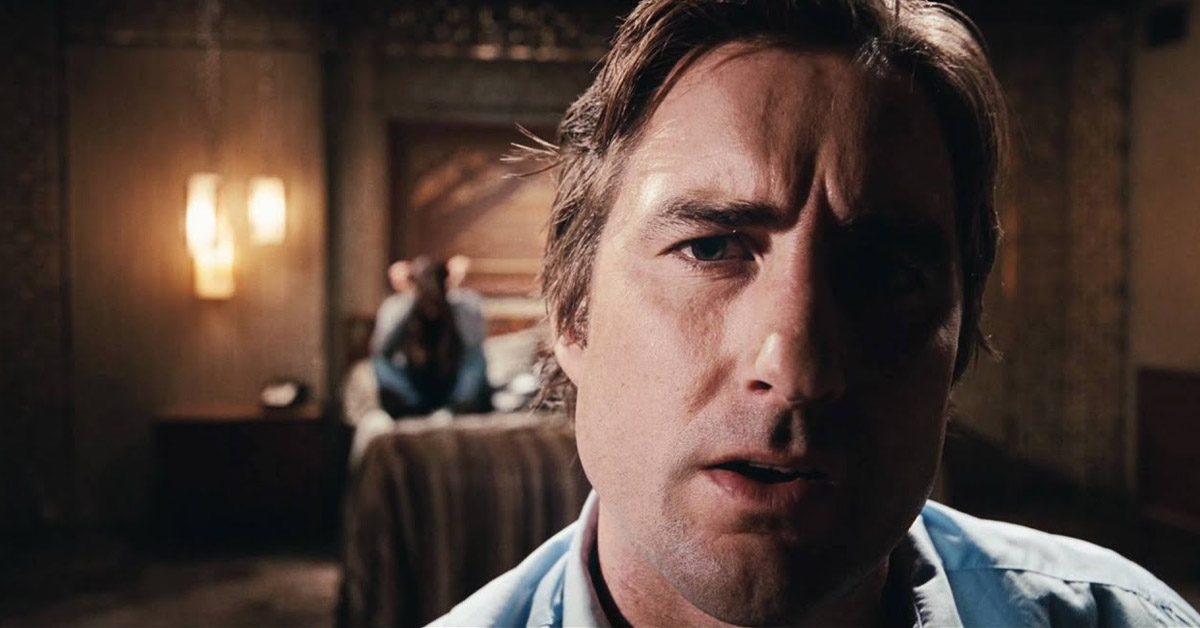Many American horror films were influenced by the Italian giallo. It’s often said that giallo was the influence behind the entire American slasher genre. But there are several American features that deserve the title American-made giallo. These are movies like Alice, Sweet Alice, Don’t Look Now, and of course Brian De Palma’s Dressed to Kill. Dressed to Kill embraces not only the visual aesthetic of the giallo, but the tone and structure as well and it does so in a way very few American films do. Don’t Look Now is a gorgeous psychosexual thriller with a great cast (including Michael Caine, Angie Dickinson, Nancy Allen, and Keith Gordon). The feature also boasts near pitch-perfect cinematography.
Initially, Angie Dickinson stars as Kate Miller, a woman who is unhappy with her marriage. So unhappy, in fact, that she’s even coming on to her therapist, Dr. Elliot (Michael Caine.) She has an affair with a complete stranger and when she’s in the process of leaving, she is murdered by a mysterious blonde woman in the elevator. A prostitute witnesses the murder and, in fine Psycho tradition, becomes the new protagonist.
The call girl teams up with Kate’s son Peter (Keith Gordon), to solve the mystery before she is charged with the crime. As she continues to investigate, the mysterious blonde woman continues to stalk her and proceeds to commit more murders. Dr. Elliot believes the killer may be one of his transgender patients, known only as Bobbi. Bobbi has been making persistent threats to the doctor over the phone. She even stole his straight razor from his office and uses it as a murder weapon. The film’s depictions of trans identity are unflattering and haven’t aged well. The picture came out at a less informed time. So, bear that in mind if you are watching for the first time.
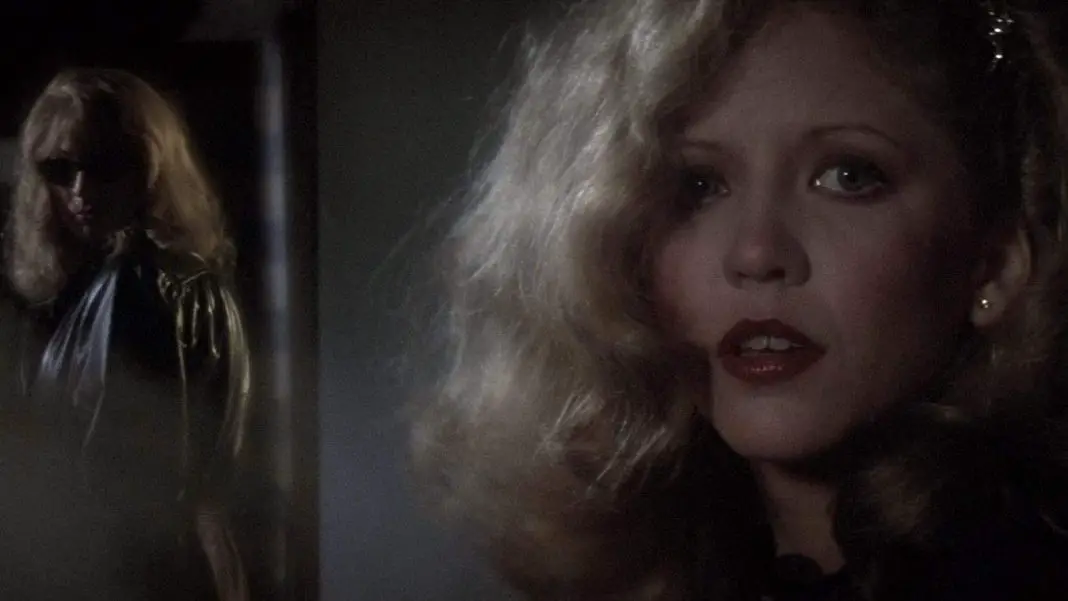
The visual style of Dressed to Kill is incredibly strong and is fused within every part of the production, from the actors to the tone and the sense of mystery. It’s not simply a case of style over substance, though. Everything is meticulously put in place to enhance and serve the film’s visual aesthetic.
The picture draws clear influence from giallo thrillers, in particular the work of Dario Argento. There are obvious echoes of Deep Red and Tenebrae in Dressed to Kill. This doesn’t negate De Palma’s own style, though. He’s a smart director who knows how to incorporate his influences and fuse them with his own line of thinking. And it works perfectly.
Visually the film lines up with the pictures of Argento and Bava. It fits in comfortably right beside them. Color is emphasized, but never so dramatically that it becomes distracting. Colors are very vivid when they need to be, particularly in the case of red. The images are gorgeous and lavish, but never overdone. The camerawork also mirrors the giallo tradition of very long, elaborate moving shots. Everything adheres to the over-accentuated, heightened emotional style common to the giallo pictures of years past. Even the violence, though cruel, is beautifully lensed.
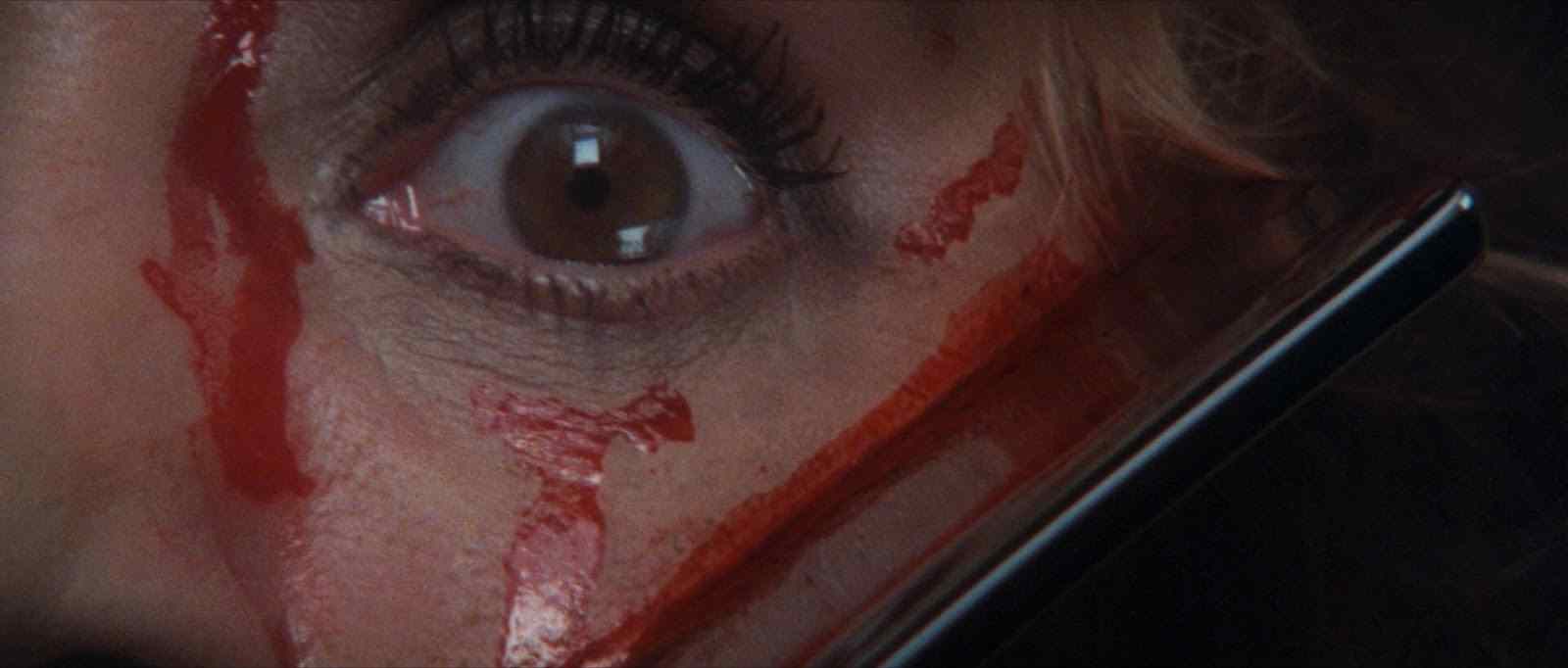 Dream sequences are also prevalent throughout the film. Dreams and dream-like states are a staple of the giallo. Giallos not only made audiences question who the killer may be, but also when a character may or may not be dreaming. Dressed to Kill admirably adheres to this method, which is very far removed from traditional American filmmaking. Most of the characters in Dressed to Kill are unhappy with their current situation and the dream sequences help serve their search to enhance themselves or their standing in life.
Dream sequences are also prevalent throughout the film. Dreams and dream-like states are a staple of the giallo. Giallos not only made audiences question who the killer may be, but also when a character may or may not be dreaming. Dressed to Kill admirably adheres to this method, which is very far removed from traditional American filmmaking. Most of the characters in Dressed to Kill are unhappy with their current situation and the dream sequences help serve their search to enhance themselves or their standing in life.
The score of Dressed to Kill also adheres to giallo traditions, as it is has a strong melody but is also constantly and seamlessly moving between psychotic and romantic. Pino Donaggio (who also worked with De Palma on the score for Carrie) understood this very well when putting the music together for the film.
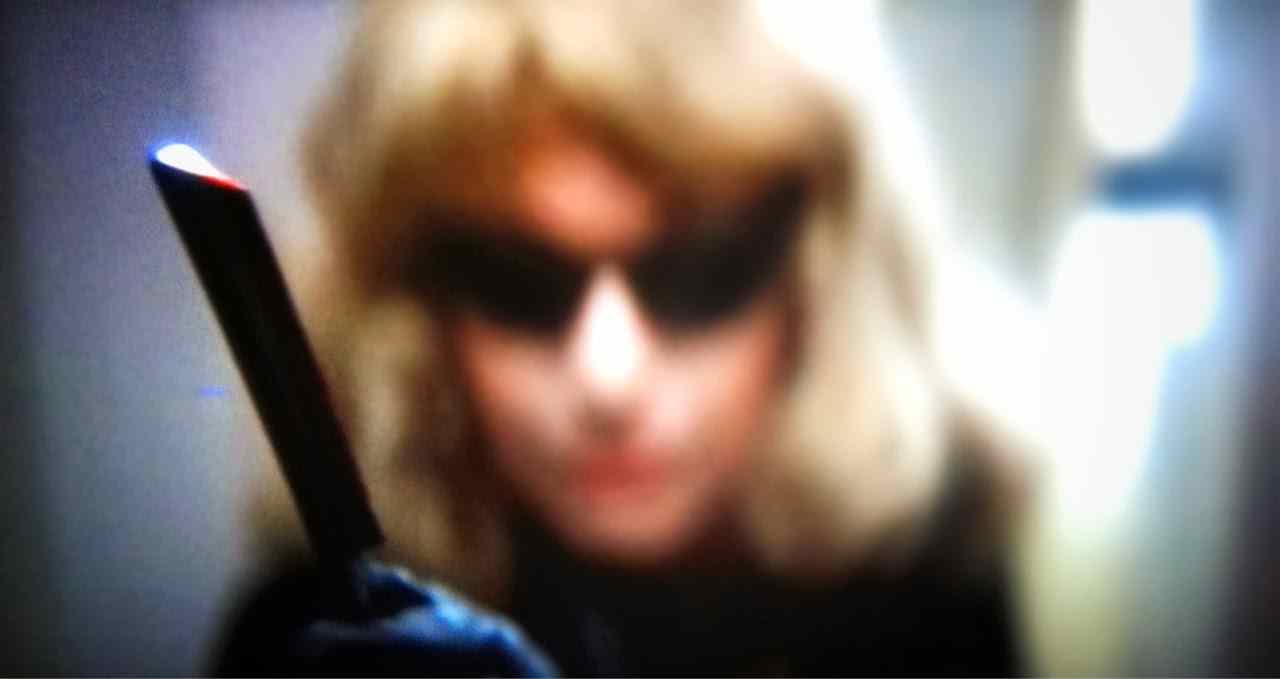 In many ways, Dressed to Kill feels more like an Italian film than an American-made project. This is particularly true of its very unconventional ending, which feels as if it could have been lifted from an early Argento picture. Nearly the last half hour of the movie is comprised almost entirely of dream sequences. It’s not straightforward. It’s not pandering to its audience. And while it’s jarring, it is meant to elicit that response. It is hard to imagine the film ending differently, but it’s a point that people have been stuck on for years.
In many ways, Dressed to Kill feels more like an Italian film than an American-made project. This is particularly true of its very unconventional ending, which feels as if it could have been lifted from an early Argento picture. Nearly the last half hour of the movie is comprised almost entirely of dream sequences. It’s not straightforward. It’s not pandering to its audience. And while it’s jarring, it is meant to elicit that response. It is hard to imagine the film ending differently, but it’s a point that people have been stuck on for years.
Dressed to Kill is a giallo to its core and it is one of the best, even if it is not Italian-made. It stands up among the great giallo thrillers of the ’70s and ’80s with ease. It’s a stylish, gorgeous, artfully done horror film and one of the best of De Palma’s career.
Be sure to follow us on social media. Twitter and Facebook.

